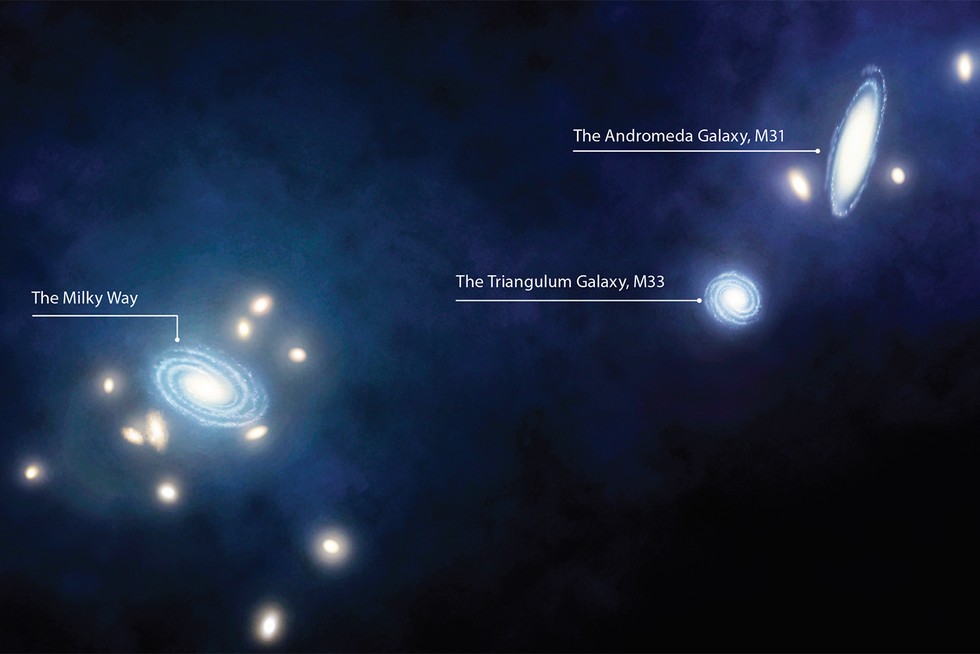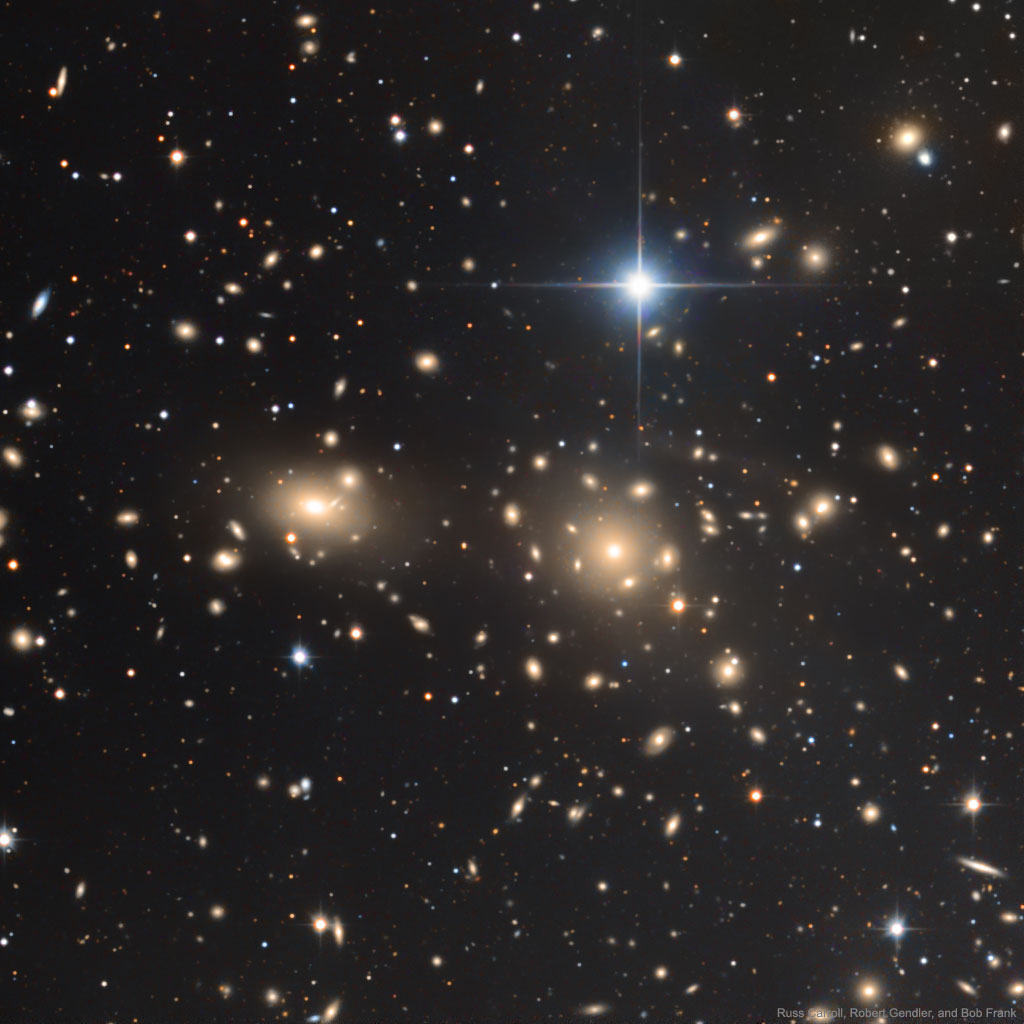
What if we were to travel beyond our own Milky Way Galaxy, and foray out into the galactic wilderness of deep space? What do you think we’d expect to find?
Would we find galaxies spread out apart from one another, little islands unto themselves? Or would we find them clustered in groups?
Well…I guess the post title kinda gave it away, huh?
Hang on tight, because it’s time for a tour of galaxy clusters!
…and what better place to start, than with our own Local Group?

Yes, it’s really called that…imaginative, right?
Anyway…
The Local Group is a galaxy cluster home to our Milky Way, our large neighbor Andromeda, the slightly smaller Pinwheel Galaxy (labeled above as M33, found in the constellation Triangulum), and many, many dwarf galaxies.
Andromeda itself is accompanied by satellite galaxies Messier 110 and Messier 32, seen below:

Messier 110 and Messier 32 are both part of the Local Group, but they are also in close orbit around the Andromeda Galaxy.
The Milky Way has its own scattering of satellites, too. While we can’t get a space probe far enough out to take a galactic selfie, you can see our satellite galaxies spread throughout the night sky…

Yeah…that’s a lot of galaxies.
There may be a lot of them, but they are small and faint, mostly dwarf ellipticals and irregulars that easily hide from sky surveys. We likely haven’t found them all; we could easily have satellite galaxies hiding behind the Milky Way’s thick dust clouds, invisible from our earthly vantage point.
One such galaxy is the Sagittarius Dwarf, which–against all odds–was discovered on the far side of our galaxy, all but hidden behind the galaxy’s core.
The Canis Major Dwarf Galaxy also nearly evaded detection. It was found thanks to the 2MASS infrared all-sky survey, when astronomers mapped the distribution of the survey’s red supergiant stars.
Yeah, they look pretty strange, don’t they?
That’s because they are irregular galaxies, a galaxy class separate from the more photogenic spirals and ellipticals. They don’t have a defined shape.
Here are two particularly well-known examples:
Meet the Large and Small Magellanic Clouds.
Those of you in the southern hemisphere might recognize these. Unlike many of the Milky Way’s satellites, these are easily viewable.
Both are irregular galaxies, but the Large Magellanic Cloud–the one on the left–does seem to have a prominent “bar” shape through its middle. This makes astronomers wonder if it might be the devoured remains of a small barred spiral galaxy.
The Local Group is what’s known as a poor cluster: a galaxy cluster containing only a few dozen to a few hundred galaxies, spread out sparsely and irregularly.
Here’s another example of a poor cluster…

Meet the Hercules Galaxy Cluster, a cluster of about 200 galaxies located 500 million light-years away in the constellation Hercules (not to be confused with the Hercules Globular Cluster, also located within Hercules).
The Local Group and the Hercules Galaxy Cluster are both perfect examples of poor clusters. Their galaxies are scattered a bit haphazardly, with smaller galaxies gathered around larger galaxies in “subclusters.”
But then, we have rich clusters…

Meet the Virgo Cluster.
This is the nearest rich galaxy cluster to our home in the cosmos, about 17 megaparsecs (54 million light-years) from the Milky Way. Gravitationally dominating the cluster is the giant elliptical galaxy M87, which appears toward the bottom of this image.
And the galaxies you see here are just a tiny sample. The Virgo Cluster is home to over 2500 galaxies, most of them elliptical.
Unlike poor clusters like the Local Group or the Hercules Galaxy Cluster, rich clusters like the Virgo Cluster tend to be centrally condensed. This means that the galaxies are crowded more closely together at the center.
Rich clusters also tend to be dominated by elliptical galaxies, a stark contrast to the two large spirals–the Milky Way and Andromeda–that dominate the Local Group.
Here’s another example of a rich cluster: the Coma Cluster.

Like the Virgo Cluster, the Coma Cluster is full of elliptical galaxies. At its heart lies NGC 4874, a giant elliptical galaxy about 10 times the size of the Milky Way.
And that brings us to a million-dollar question. Why are rich clusters dominated by elliptical galaxies, while poor clusters have more spirals?
A clue lies in the rare galaxies that are found isolated, drifting through intergalactic space apart from clusters. Between 80% and 90% of these are spiral galaxies.
It would seem that spiral galaxies are not common in crowded intergalactic environments. Elliptical galaxies, on the other hand, seem to thrive in crowds.
But…why?
We’ll explore that next up!



